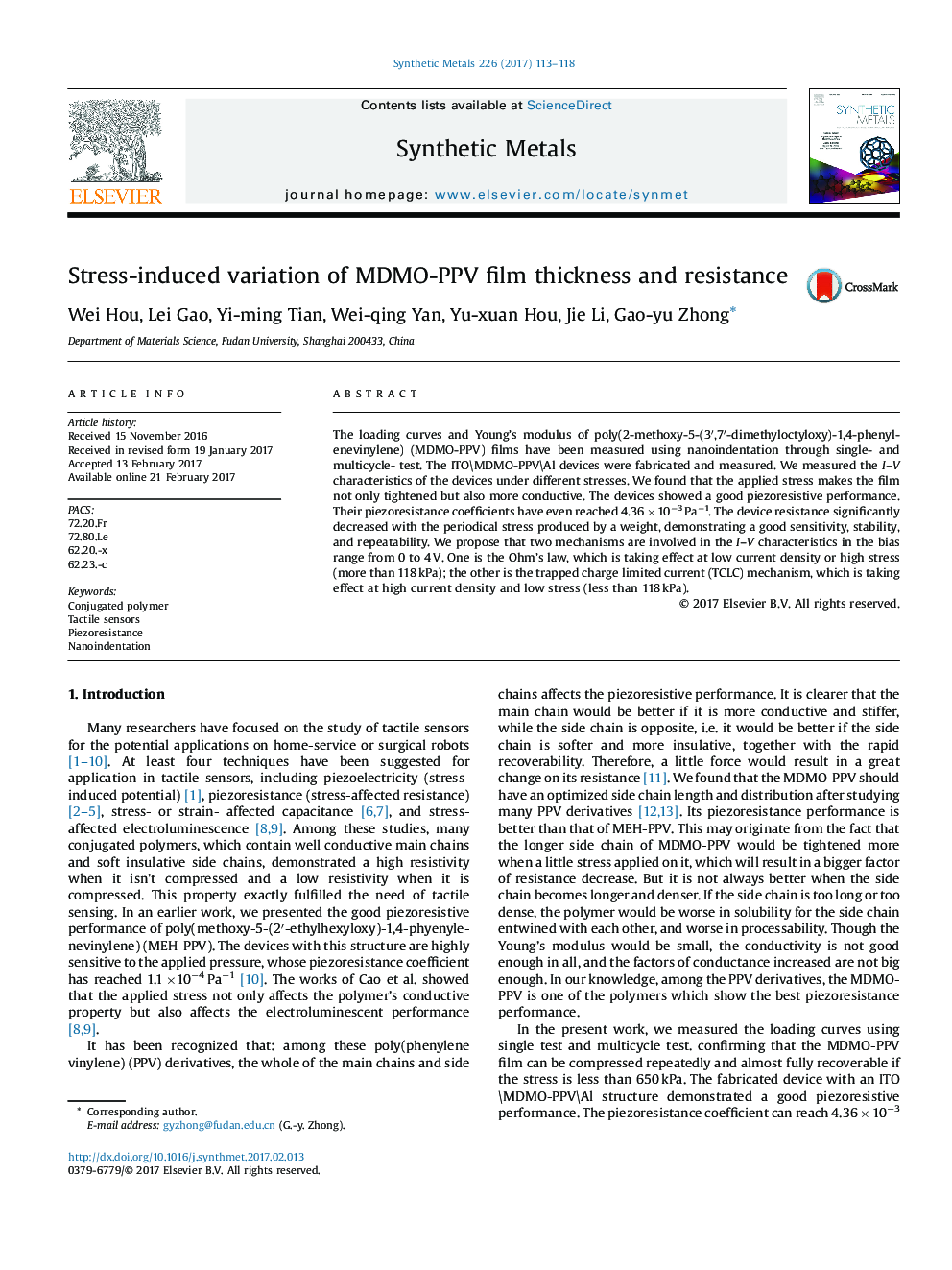| Article ID | Journal | Published Year | Pages | File Type |
|---|---|---|---|---|
| 5435483 | Synthetic Metals | 2017 | 6 Pages |
â¢The mechanic and electrical properties of MDMO-PPV are measured.â¢Stress tightens MDMO-PPV and makes it more conductive.â¢The maximum piezoresistance coefficient is 4.36 Ã 10â3 Paâ1.â¢Conductive mechanism changes from TCLC to Ohm's law after tightening.
The loading curves and Young's modulus of poly(2-methoxy-5-(3â²,7â²-dimethyloctyloxy)-1,4-phenylenevinylene) (MDMO-PPV) films have been measured using nanoindentation through single- and multicycle- test. The ITO\MDMO-PPV\Al devices were fabricated and measured. We measured the I-V characteristics of the devices under different stresses. We found that the applied stress makes the film not only tightened but also more conductive. The devices showed a good piezoresistive performance. Their piezoresistance coefficients have even reached 4.36Â ÃÂ 10â3Â Paâ1. The device resistance significantly decreased with the periodical stress produced by a weight, demonstrating a good sensitivity, stability, and repeatability. We propose that two mechanisms are involved in the I-V characteristics in the bias range from 0 to 4Â V. One is the Ohm's law, which is taking effect at low current density or high stress (more than 118Â kPa); the other is the trapped charge limited current (TCLC) mechanism, which is taking effect at high current density and low stress (less than 118Â kPa).
